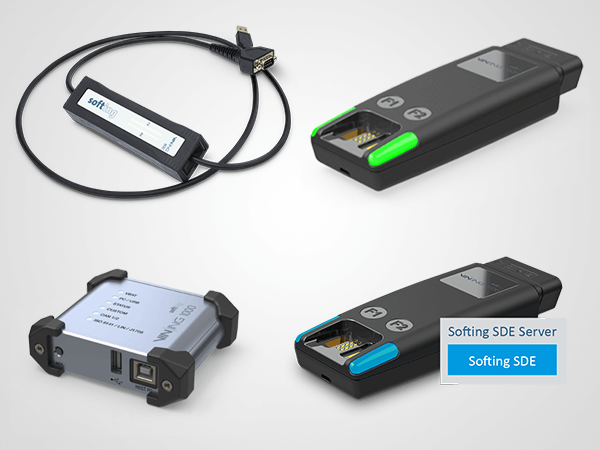SAE J1979-2 OBDonUDS – Diagnostic Standard
The diagnostic standard OBDonUDS SAE J1979-2 describes the communication between the vehicle's OBD systems and external UDS based test equipment.

From OBDII to OBDonUDS
Systems for monitoring emissions have been mandatory in almost all vehicles for decades. The pioneer was the US government commission California Air Resource Board (CARB). As early as 1996, CARB established requirements for the detection and indication of emissions-related malfunctions in vehicles. The requirements for emissions-related diagnostics are laid down in the regulations on on-board diagnostics (OBD), now known as OBD II, and specified in the SAE J1979 standard for the USA and in the ISO 15031 standard for Europe.
Particularly for vehicle registration, manufacturers are required to comply with strict exhaust emission limits. External test devices, also known as OBD scan tools, are used to retrieve the emissions-relevant information via diagnostic service requests. All emission-relevant control units must have a corresponding diagnostic function.
In April 2021, SAE International published the Recommended Practice SAE J1979-2 (OBDonUDS). This standard is the successor to SAE J1979 and describes the communication between the OBD system and a scan tool based on the services standardized in ISO 14229 as Unified Diagnostic Services (UDS).
Softing Automotive supports the SAE J1979-2 diagnostic protocol with the entire tool chain.
Functionality SAE J1979-2 – OBDonUDS
The table shows which of the total of 26 UDS services specified in ISO 14229 are used for diagnostic communication with OBDonUDS. The four marked services are parameterized either with a Sub-Function Byte (0x19 and 0x31) or a 2-byte Data Identifier (DID).
Besides the translation of SAE J1979 $01-$0A services into UDS services, OBDonUDS provides additional functions:
- DTC-based Readiness
- ExtendedDataRecords for DTCs
- Translation of readiness groups to DTC readiness
- Snapshot support for up to five DTCs and two events each.

Outlook SAE J1979-2 – OBDonUDS
OBDonUDS (SAE J1979-2) will be applied in the USA from 2023. From 2027, it will be mandatory to read out data from vehicles with combustion engines via this protocol. Currently, experts at SAE International are working on SAE J1979-3 (ZEVonUDS), a protocol specifically for diagnostic communication with zero emission vehicles.
Webinar "OBDII goes UDS"
Find out how the latest CAN technology enhancements support UDS, what the SAE J1979-2 regulations mean in practice for diagnostics test, and how OEMs and Tier 1s can benefit.
The webinar also provides an introduction to the pairing of Kvaser’s U100 interface with Softing TDX’s diagnostic test development suite for servicing and repairing road vehicles and mobile machinery.
Speakers:
- Peter Subke, Director Business Development, Softing Automotive
- Julian Mayer, Product Manager, Softing Automotive

Solutions
Softing Automotive supports the SAE J1979-2 diagnostic protocol with the entire tool chain.
You are interested or have questions?
Get in touch with us: info.automotive[at]softing[dot]com








